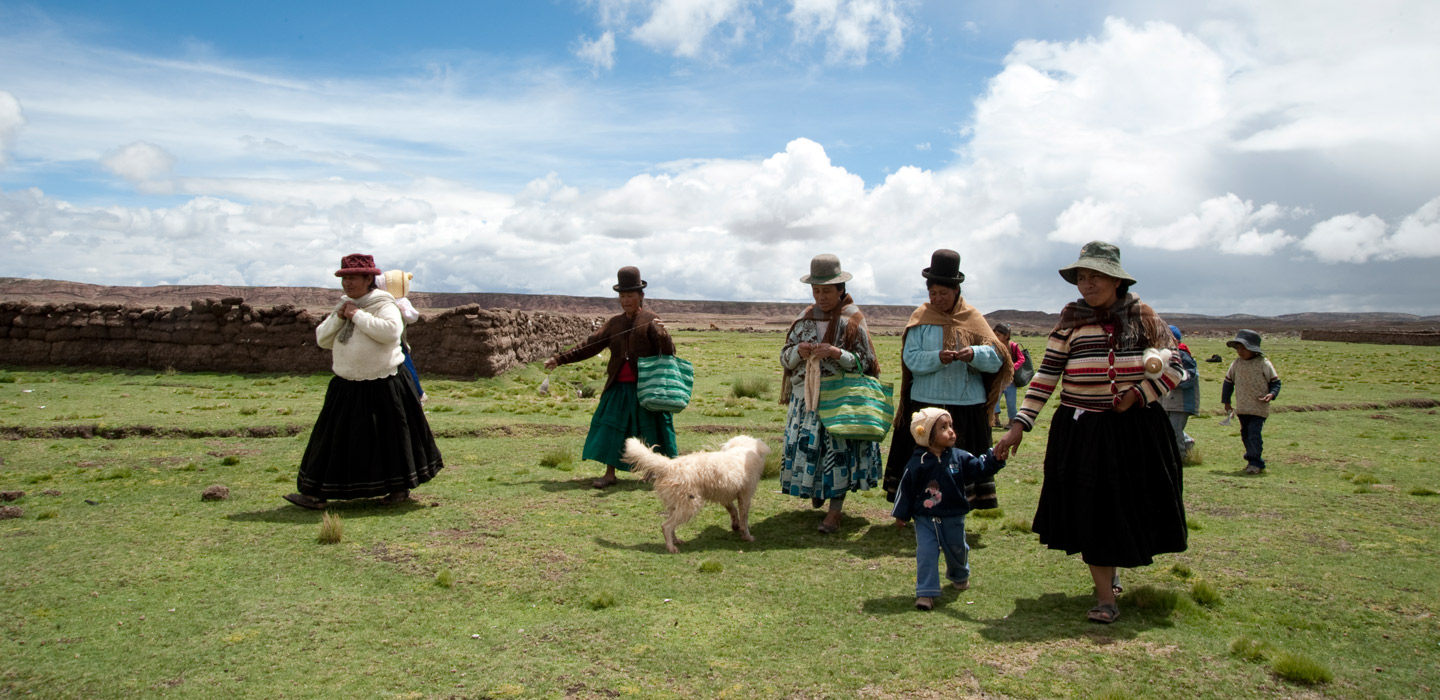Gender-focused solutions for the post-COVID return to rural areas
IFAD Asset Request Portlet
Asset Publisher
Gender-focused solutions for the post-COVID return to rural areas
By Paula Pinto Zambrano, Rossana Polastri

Internal migration (migration within a country) has important demographic, social, cultural and economic implications for communities and individual people. Under normal circumstances, migration typically flows from rural to urban areas as people seek employment opportunities in the cities. However, the COVID-19 pandemic has given rise to a new wave of migration in the opposite direction: people are leaving the cities to return to rural areas. By mid-2020 in Peru, for example – just a few months after the pandemic began – 167,000 people had left the capital city to return to rural regions. Several other Central American countries have similarly witnessed the return of domestic workers to their rural communities of origin, especially during the early months of 2020. These examples almost certainly reflect the reality in many other Latin American countries.
Many of these migrants were forced to return to rural areas upon losing their jobs and, therefore, their capacity to afford the higher costs of urban living. Although some later returned to the cities, others have chosen to stay in rural areas in hopes of earning an income.
As migration has particularly strong effects on the agriculture sector, it is important for IFAD and other organizations to identify solutions to the challenges this new phenomenon has created, and will continue to create, for rural agricultural development. This is especially critical from a gender equity perspective.
Spotlight on rural women in agriculture
Efforts like these should focus on the challenges facing women – especially rural women – for several reasons: First, the pandemic, and its various consequences, have had a disproportionately stronger effect on women than on men. Second, rural women are integral to the production, processing, and marketing of the food and other agricultural products grown by their communities. Nevertheless, they face many limitations in accessing productive resources and technologies, as well as financial services such as loans.
Circumstances like these underscore the urgent need for economic inclusion programmes. Failing to channel our programmes in this direction could result in the continuation of multiple serious social problems affecting these women and their families. For example, a lack of economic inclusion could lead to rural women becoming dependent on other household members. This in turn would exacerbate gender inequality, which often has other consequences, such as gender-based violence.
Economic inclusion and social protection as effective responses
IFAD and other organizations must therefore focus their efforts on simultaneously promoting women’s economic inclusion and ensuring their social protection. There are many potential actions that can be taken, including enforcing and increasing the conditionality of agricultural assistance programmes (i.e., requiring them to meet certain conditions to be eligible for financial support); increasing support for investments in agricultural expansion and small-scale agribusinesses; and enhancing labour market mechanisms via measures as simple as establishing employment offices in rural areas. Actions like these have previously been recommended by organizations such as the OECD. They are also in line with instruments such as the New York Declaration for Refugees and Migrants and the Global Compact for Safe, Orderly and Regular Migration.
Moreover, we must analyze the possible synergies between social protection and economic inclusion programmes and apply them in a manner that benefits women returning to rural areas.
Research conducted via the Sinergias Rurales grant (financed by IFAD and implemented by the Universidad de los Andes), for example, has demonstrated the importance of these synergies for rural development. Notably, these synergies were identified at multiple points in the implementation process: at the time of providing credit to rural populations, during capacity-building, and while providing the opportunity to develop soft skills. These and other findings have been used to inform policy decisions in seven countries across Africa and the Latin America and the Caribbean region, as well as by financial institutions looking to create effective coordination among programmes.
In the Latin American context, these findings are corroborated by earlier outcomes from Colombia’s Programa Proyectos Productivos (PPP), a programme featuring the simultaneous implementation of economic inclusion and social protection activities. The synergies between these initiatives produced positive effects across many realms, including food security, social capital, households’ subjective perception of their own well-being and, most of all, the empowerment of women-headed households. Participating households showed significant improvement in intra-household gender equity, particularly in the perception of domestic work. Furthermore, men’s and women’s access to formal financial services increased by 20 per cent, thus reducing the use of informal loans by 30 per cent.
Additional research from Colombia, Mexico and Peru also shows that offering economic inclusion and social protection programmes in tandem leads to positive results, especially for vulnerable groups, including women. Therefore, designing projects that work with existing programmes of these kinds could help us reach more women in vulnerable circumstances, such as rural migrant women.
Looking ahead: Adapting to COVID-19 and other circumstances
The integration of social protection and economic inclusion programmes is a powerful tool for reducing gender inequalities and promoting women’s empowerment and economic inclusion. As we expand these programmes, particularly in the context of the Latin America and the Caribbean region, we must pay special attention to women who have returned to rural areas because of the COVID-19 pandemic and who are therefore in vulnerable situations. The synergies between these efforts must therefore be considered in the design of our own projects. We should also ensure they will incorporate new needs that have emerged from the pandemic, such as the new migration dynamics.
IFAD is committed to supporting all rural women, especially those in the middle of this transition. Therefore, throughout our IFAD12 portfolio, we will continue to promote community resilience through tools such as financial inclusion in rural areas, the creation of knowledge, and gender mainstreaming. We will continue to adapt to the new needs arising from COVID-19 and other unexpected events as part of our commitment to leave no one behind.
Publication date: 01 September 2021